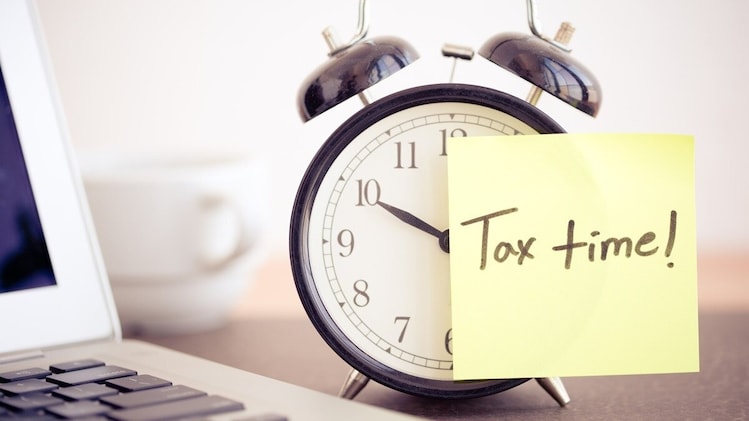
ITR FILING 2024: HOW MANY TIMES CAN YOU CHANGE YOUR TAX REGIME IN A FINANCIAL YEAR?
Income Tax 2024: With changes in the tax slabs under the New Tax Regime, many taxpayers may want to shift to the newer taxation system thinking it would save more taxes. The Income Tax Department offers individuals the opportunity to select their income tax regime for a given financial year. The frequency of switches permitted depends on your profession or specific criteria set forth by tax regulations.
There are currently two tax regimes available: the Old Tax Regime and the New Tax Regime. Taxpayers are required to indicate their choice of tax regime when submitting their proofs and also while filing their tax return.
In the Old Tax Regime, deductions are available to reduce your tax liability and promote a savings-oriented mindset. On the other hand, the New Tax Regime simplifies the tax filing process with fewer deductions, resulting in a higher disposable income. Individuals with lower income and fewer deductions might find the New Tax Regime more advantageous.
When deciding on the most suitable tax regime, it is crucial to consider factors such as your financial goals and tax-saving objectives. Some may discover that the new tax regime allows for greater savings, while others may find the old tax regime more beneficial.
Old Tax Regime vs New Tax Regime
The Old Tax Regime is the age-old tax structure that has been in place for decades, offering taxpayers the opportunity to leverage various deductions and exemptions outlined in different sections of the Income Tax Act. Approximately 70 deductions and exemptions are available within this framework to help reduce taxable income, including a deduction of up to Rs 1.5 lakh under Section 80C.
In contrast, the New Tax Regime, unveiled in the Union Budget 2020, features reduced tax rates. However, taxpayers who opt for this new regime are unable to avail significant deductions such as HRA, LTA, Section 80C, and others.
In a notable development, the Union government, through Budget 2023, designated the New Tax Regime as the default choice for taxpayers. Should an individual fail to explicitly select between the old and new tax regimes, their taxes will be automatically computed under the new regime.
How many times can you change your tax regime
Section 115BAC of the Income-tax Act, 1961, deals with the new tax regime. The section allows an individual to select the tax regime in each financial year (if there is no business income) at the time of filing income tax return. The income tax return form provides an option to select the tax regime under which an individual wants his/her income to be assessed for a particular financial year.
Salaried individuals and business professionals have the flexibility to choose between the old and new tax regimes on an annual basis. Conversely, individuals outside of these groups are restricted to a single transition between the old and new regimes for their lifetime.
Salaried individuals can switch between the new and the old tax regime every financial year. This flexibility allows taxpayers to choose their preferred tax regime based on their financial circumstances. If a taxpayer has selected the new tax regime for TDS (Tax Deducted at Source) throughout the year, they still have the option to easily change their preferred tax regime when filing their Income Tax Return (ITR).
The Central Board of Direct Taxes (CBDT) introduced some changes in income tax return forms for the Assessment Year 2024-25. In the ITR Form 1, taxpayers have the option to select their desired tax regime, providing them with more control over their tax liabilities.
In the tax return forms for the financial year 2023-24, individuals who wish to "opt out" of the new tax regime are required to fill out a separate form in addition to selecting the 'Old Regime' option. It is crucial for taxpayers to complete this step; otherwise, the tax computation will be calculated under the new regime, potentially leading to unintended tax consequences.
Form 10-IE
Any individual generating income from a business or profession is allowed to modify tax regimes only once. Thus, if a self-employed taxpayer opts for the new tax regime, they are permitted to revert to the old regime just one time during their entire lifetime.
For the switch between tax regimes, these taxpayers must submit Form 10-IE along with their Income Tax Return (ITR). Failure to submit Form 10-IE by the original deadline for filing the ITR will disallow them from switching back to the old regime for that specific year.
Prior to submitting the income tax return, Form 10-IE must be filed. Upon submission of Form 10-IE, a 15-digit acknowledgment number will be issued. It is imperative for taxpayers to include this 15-digit acknowledgment number during their ITR filing under the new tax regime.
Tax Slabs for FY 2023-24
INCOME TAX SLAB (IN RS) OLD TAX REGIME NEW TAX REGIME
0-2,50,000 0% 0%
2,50,001-3,00,000 5% 0%
3,00,001-5,00,000 5% 5%
500,001-6,00,000 20% 5%
6,00,001-9,00,000 20% 10%
9,00,001-10,00,000 20% 15%
10,00,001-12,00,000 30% 15%
12,00,000-15,00,000 30% 20%
15,00,0001 & Above 30% 30%
2024-07-26T10:33:18Z dg43tfdfdgfd